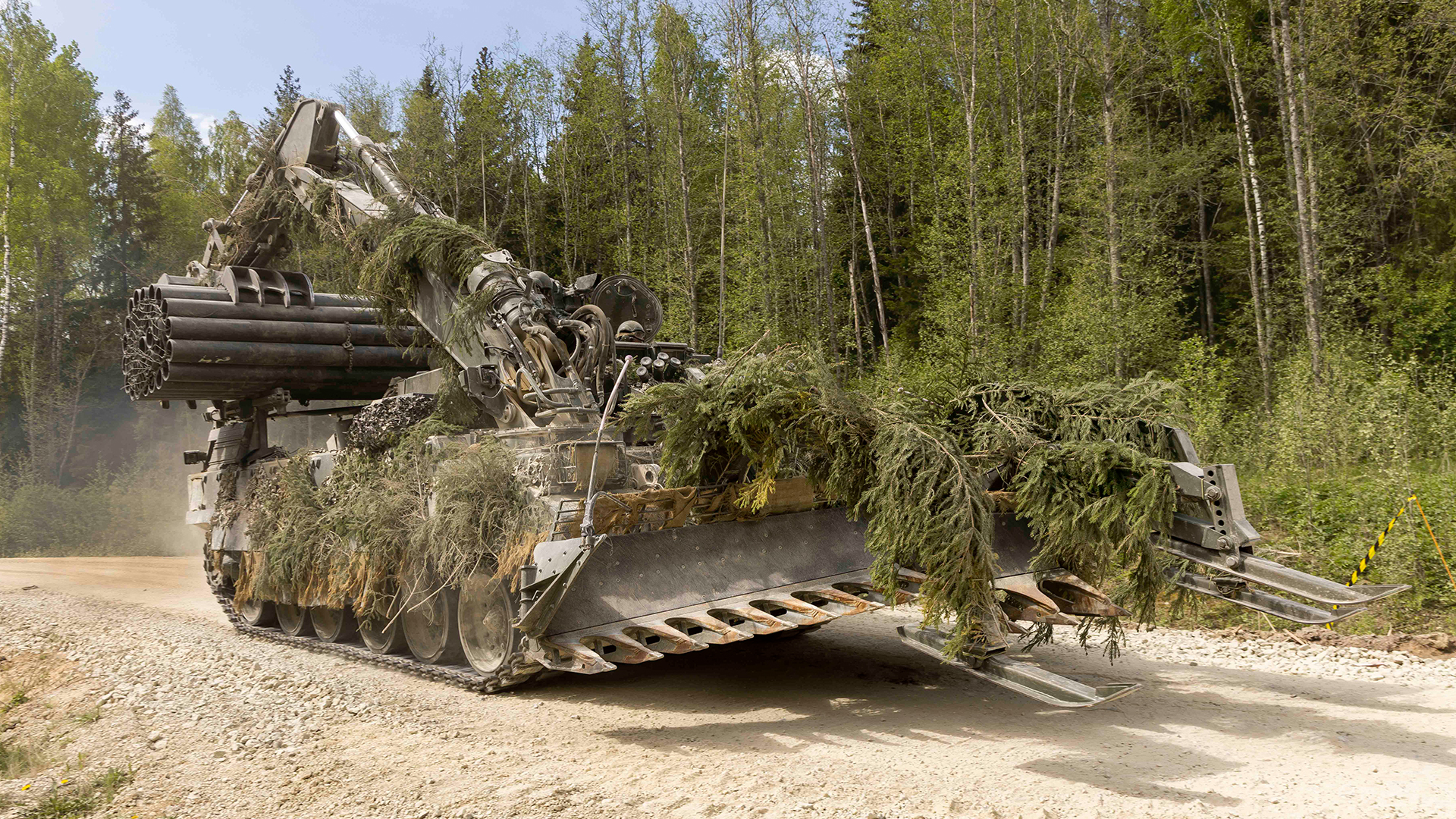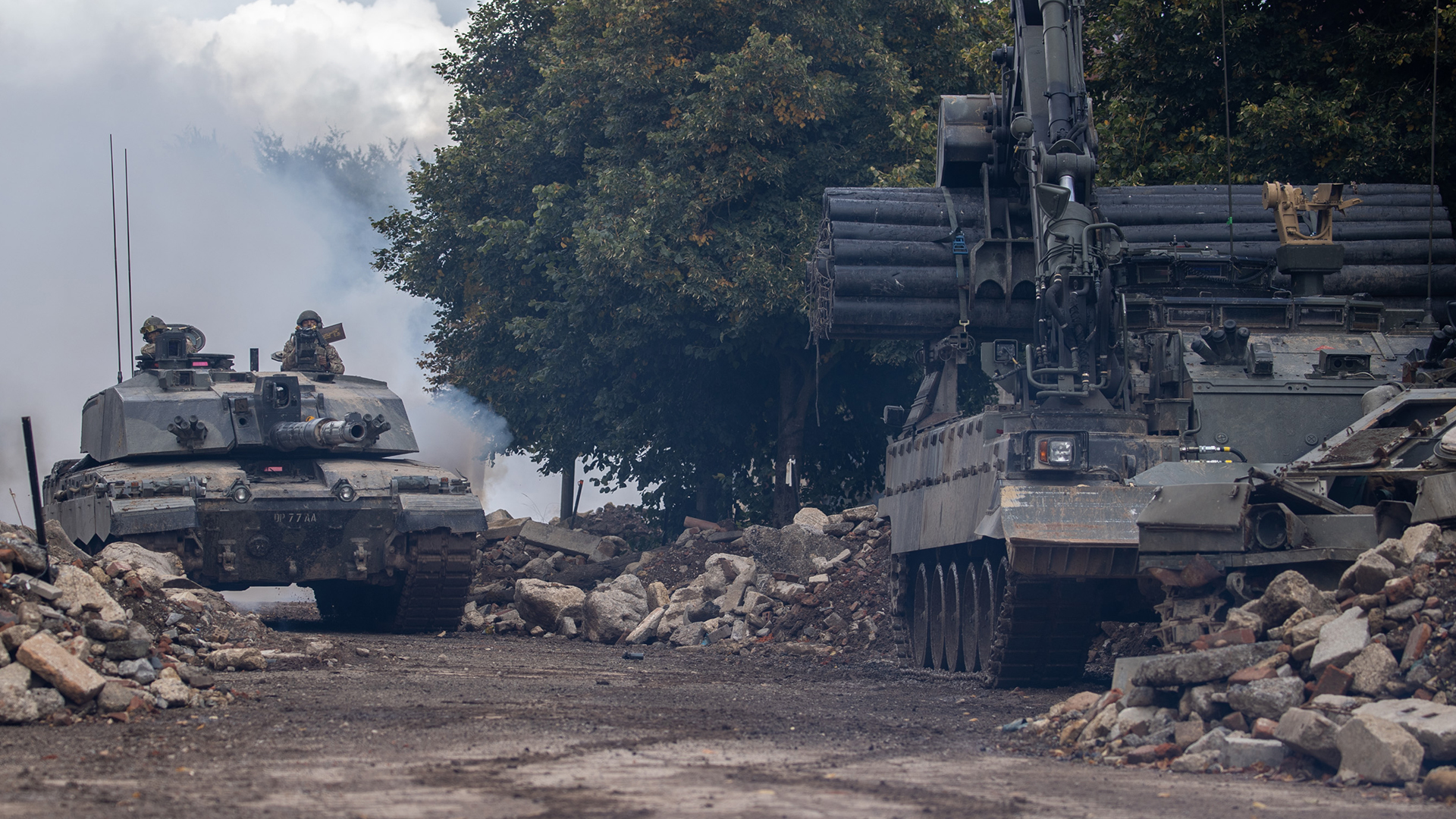29th May 2025 at 10:59am

Main battle tanks like the Challenger 2 rely on a combination of firepower, mobility and protection – all of which a potential enemy is well aware.
To slow down or halt the advance, the enemy can create anti-tank ditches and lay minefields – and even if the tanks avoid the mines they can end up being channelled into a kill zone where they can be targeted by artillery.
And that’s where the British Army’s Trojan armoured engineer vehicle comes in.
- Taste-testing a British Army ration pack – and here’s what you’ll find inside
- Teen infanteer on Estonia trench life: It’s like having 60 really annoying brothers
- Bayonet turns into Kukri as Gurkha infanteers train in bleak terrain of the Falklands
This vehicle is designed to open routes through complex battlefield obstacles and clear a path through minefields.
The Trojan Armoured Vehicle Royal Engineers is a combat engineering vehicle that was designed as a replacement for the Chieftain AVRE – the ChAVRE.
The Trojan is based on the chassis of the Challenger 2 it’s designed to support, and is powered by the same Perkins CV12 diesel engine.

Its standard equipment includes a dozer blade, mine plough and an excavator arm, and a mine-marking system can also be fitted.
It can also carry fascines – a bundle of pipes that are dropped into a ditch, filling the gap so it can then be driven over.
The Trojan can also tow a trailer-mounted, rocket-propelled, mine-clearing system.
Although it has no turret – the Trojan is not a tank – all this dedicated kit gives it a combat weight of 62.5 tonnes, but it can nevertheless achieve a top speed of 59km/h.
Improved visibility is achieved by incorporating direct and indirect vision devices with low-light, image-intensifying and thermal imaging capabilities. It also has a CBRN protection system.

Because it can free up an armoured advance, the Trojan is considered a high-value target. It has some means of protection, being armed with the 7.62mm belt-fed L7A2 GPMG.
But it relies on the very vehicle it’s there to support – the Challenger 2 – to protect it against threats such as enemy armour.
While it was designed for the battlefield, the Trojan has the flexibility to support a wide range of operations, including humanitarian missions.
from WordPress
via IFTTT
No comments:
Post a Comment